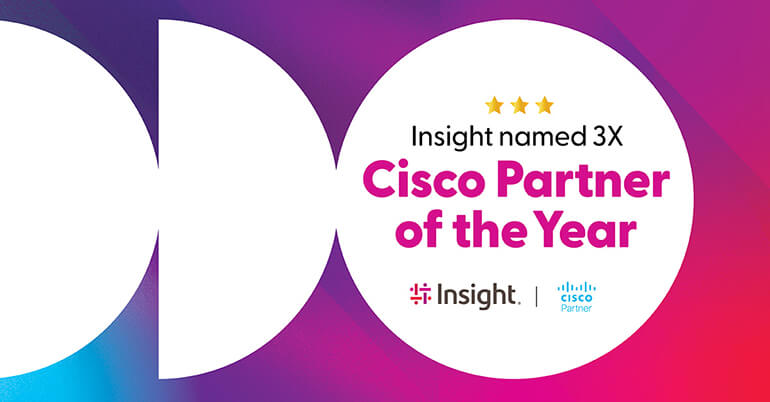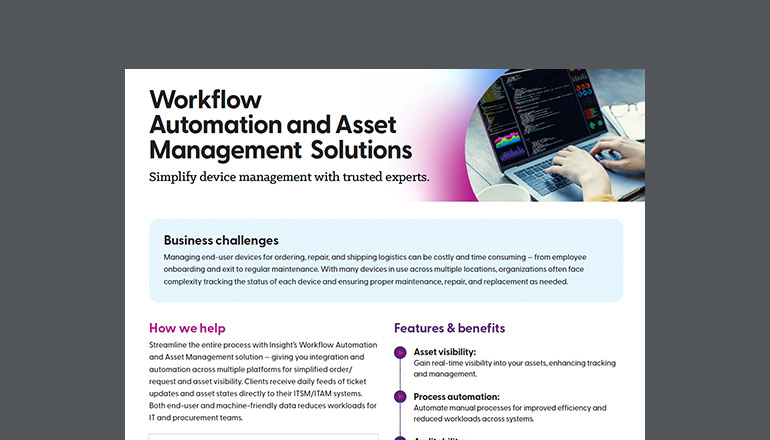Article How to Calculate IT ROI
IT ROI can be somewhat of a misnomer. While it’s true that companies spend significant amounts of money on their technology infrastructure, the unfortunate reality is that IT is less of an investment and more of a cost centre.
By Insight Editor / 29 Nov 2018

Much like electricity and office rent, technology is one of those primary business functions that you simply can’t exist without.
That being said, it’s still important to determine if you’re maximizing your IT spend. When doing so, you should take into consideration such factors as:
- Downtime/lack of availability
- Industry averages
- Number of IT incidents
- Time lost due to slow computing capability
- Administration/maintenance costs
They should give you an understanding of how efficiently you are spending your IT budget and identify areas where you can reduce your costs.
IT Support Costs and Benefits
IT support desks are an important part of the cost-control conversation. For many organizations, the IT department's primary functions are to maintain existing systems and solve issues. They can either be internal to your organization, or provided as a service by an external provider. Either way, they are critical to your operations and your users.
Businesses are challenged by the fact that help/support desks are a service they can’t live without, yet they can be costly to maintain. Hiring the right team of certified resources can also be risky and time-consuming.
Looking at options to outsource support to IT staffing services can result in significant cost savings while giving you the level of support you need.
Managed IT Support
Working with a managed IT service and support partner can dramatically reduce your costs and give you peace of mind. Here’s how to determine if it might be a good option for your organization.
How to Calculate IT ROI
First, figure out your current and predicted annual productivity losses due to time spent managing vendors. To do this, you’ll need to review the current number of IT vendors you use.
Consult with whomever in your organization is working with them to get a picture of roughly how much time they spend working with each one on average each month.
Once you’ve acquired that number, multiply those hours by the number of vendors involved. Then take that number and multiply it by the average hourly salary of the personnel managing these relationships.
The resulting figure is your IT vendor management cost. This calculation looks like: Avg Time Spent Managing Vendor x Number of Vendors x Avg Hourly Salary of Staff.
After you’ve determined the cost of managing your vendor relationships, you’ll want to determine the hours your staff spend performing IT functions. Take those hours and multiply them by the average hourly rate of the people performing these tasks.
This calculation looks like: Hours Spent By All Staff Performing IT Functions x Avg Salary of All Staff Performing IT Functions.
The next step is to calculate how many hours each month your email, internet, servers, desktops, and any other IT-related devices and services are down or non-functional. These numbers represent the direct revenue loss incurred from downtime.
Finally, you’ll need to calculate your productivity loss from network downtime.
Take the average employee salary at a location impacted by downtime and multiply that number by the number of staff at that location. From there, take the average time worked by each employee per year and determine the average cost of all personnel per hour. Take that hourly average rate and multiply it by the number of hours your systems were down.
This can represent a significant cost depending on your organization’s industry sector. For instance, in an industry with highly-paid specialists (i.e. law, finance, etc.), downtime can mean your most valuable assets are sitting idle until issues are resolved.
Once you’ve calculated these numbers, you can determine the ROI of a managed support solution. Take your existing IT costs, both from internal sources as well as outsourced solutions and combine them. This number should factor in support for all computers, printers, physical servers, copies, and any other devices. Take that number and add to it the numbers you found earlier. This final number is your total IT cost.
Once you’ve acquired this number, you can reach out to outsourced solutions and compare the costs quoted versus your own prices.
The Equation for Calculating IT ROI
Fixed IT Costs + Lost Productivity + Lost Revenues + Time Spent on IT Tasks + Cost of Managing Vendor Relationships = Total Cost of IT






